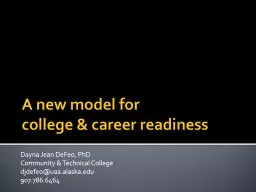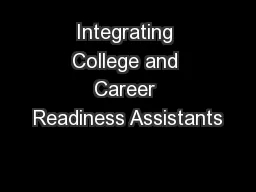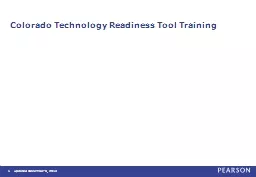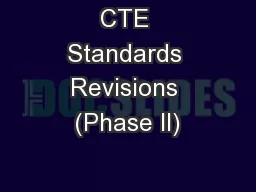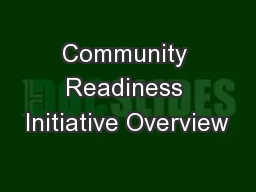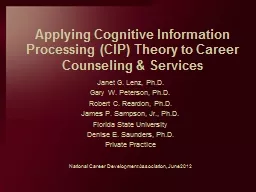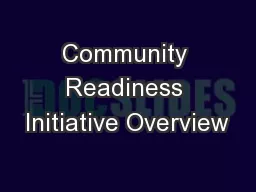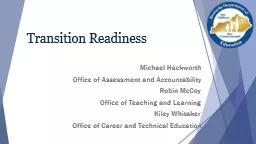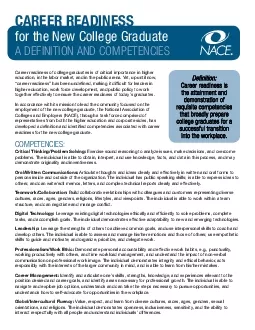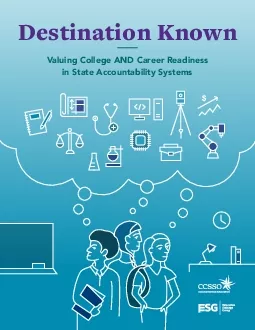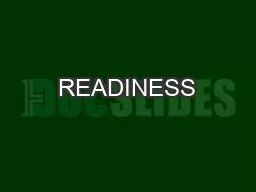PPT-Making Career Readiness
Author : karlyn-bohler | Published Date : 2018-11-09
Count Tuesday May 27 th 200300 pm ET Reviewed state report cards and accountability formulas Identified careerfocused indicators and how they were being publicly
Presentation Embed Code
Download Presentation
Download Presentation The PPT/PDF document "Making Career Readiness" is the property of its rightful owner. Permission is granted to download and print the materials on this website for personal, non-commercial use only, and to display it on your personal computer provided you do not modify the materials and that you retain all copyright notices contained in the materials. By downloading content from our website, you accept the terms of this agreement.
Making Career Readiness: Transcript
Download Rules Of Document
"Making Career Readiness"The content belongs to its owner. You may download and print it for personal use, without modification, and keep all copyright notices. By downloading, you agree to these terms.
Related Documents


